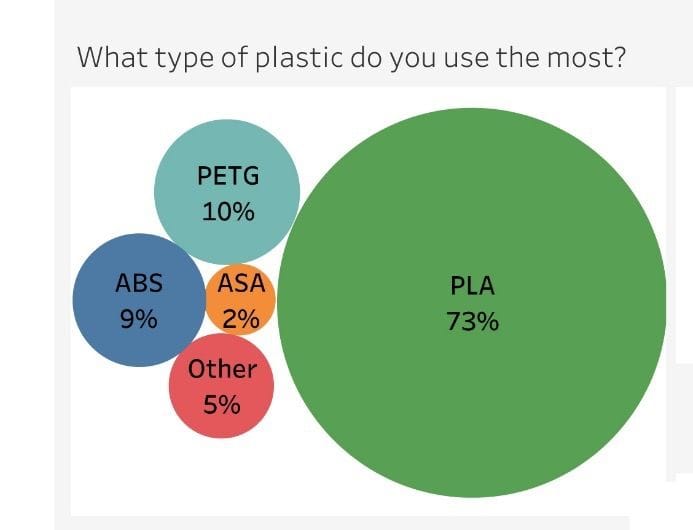
An interesting survey was conducted by Filaments.Directory that reveals some interesting behavior by 3D printer operators.
Filaments.directory is an online service that provides information about 3D printer filaments through an extensive database. They’ve collected data on hundreds of different materials from a wide variety of vendors, and present it through an interactive search service.
Thus they are in a good position to perform surveys on filaments. Evidently they performed one previously in 2016, and with the 2018 results they can observe any trends.
They found, as we have similarly noticed, an uptick in the percentage of professional users, whereas hobbyist users have dropped as a proportion of the total 3D print users. This is unsurprising, given the new availability of professional machines targeted specifically at designers, architects and engineers. If those machines now exist, they are now being used. Also similarly, they report 92% male respondents, which is a somewhat more extreme ratio than our own 88%.
One very interesting finding is that PETG has superseded ABS as the second most popular material, with PLA being the first, of course. ABS was the first material popularly used for desktop 3D printing many years ago, simply because of its universal availability as a welding consumable.
But as anyone who’s used ABS knows, it’s really a challenging substance to 3D print, requiring unusual bed adhesion systems, heated chambers and a lot of luck at times. I’m quite pleased to see it drop down the list, now replaced by PETG, which is quite a bit easier to 3D print and offers somewhat similar engineering properties.
Filaments.directory found a very wide spectrum of purchase habits, ranging from literally zero filament per month to more than 15kg! However, most seem to consume a spool or two per month.
Another surprising finding was the number of machines per respondent. It seems that 18% of respondents report they own more than FIVE 3d printers! In fact, 65% of respondents own more than one 3D printer.
This is a very curious result. Filaments.directory suggests this may be due to the higher number of professionals reporting, who may very well operate small fleets of machines. But I think there could be another reason: machine obsolescence.
I propose that a large chunk of hobbyists own more than one 3D printer simply because the capabilities of newer machines are so much better, and costs so much lower, that adding a new machine becomes easy. (Confession: I have eight, at the moment!)
Another interesting finding is that over half of respondents primarily purchase filament from their printer manufacturer. This is quite curious, as most machines are “open materials”, enabling them to use any filament they can find. But apparently the majority do not take up that opportunity, and prefer the “safety” of using the manufacturer’s recommended materials.
Granted, using the manufacturers materials usually ensures you obtain good quality print results, but you can also get the same or better by experimenting with alternative materials. Perhaps people just don’t have the time or inclination to do filament experiments, which I admit can be tedious.
I’m pleased to see that most respondents buy materials based on quality over other attributes. I learned this lesson long ago when attempting to use “cheap” materials. Quite often they don’t work – at all. I’ve used some cheap filaments from which I could never obtain a single successful print. Some have even damaged my equipment through pathological failures. Always buy quality filament. Always!
Please take a look at all the remaining results; it’s quite interesting.

PS – I didn’t know that UK was not part of Europe, at least yet?

